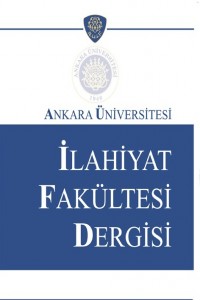Abstract
Due to their high degree of rhetorical power, the hadiths of the Prophet Muhammad articulate even complicated issues in a succinct and concise way. Therefore, the message that hadiths are intended to communicate always finds an ear and leaves a powerful impact on the listener. Arab linguists and rhetoricians were affected by this characteristic of hadiths so much so that they employed the hadiths to provide an example for certain aspects of Arabic rhetoric. An attempt to analyze the rhetorical power of the hadiths would be beyond the scope of this study, and so the present study only aims at making a contribution concerning the influence of the hadiths in Arabic rhetoric
Abstract
Arap Belağatinde Hadisin Etkisi Peygamber’in (s.a.v.) hadisleri, üstün fesahat ve belağat derecesiyle az sözle çok mana ifade etmekte, derin ve kapsamlı meseleleri veciz bir şekilde dile getirmektedir. Bu sayede, hadislerin iletmek istediği mesaj yerini bulmuş ve muhataplarında daha kalıcı bir tesir bırakmıştır. Arap dilbilimcileri ve belağatçileri, bu özelliklerinden dolayı hadislerden etkilenmişler ve bunları belağat ilminin çeşitli mevzuları bağlamında örnek olarak kullanmışlardır. Hadislerin belağat derecesinin tahlili bir makaleye konu edilemeyecek ölçüde kapsamlı ve geniştir. Bu sebeple, bu çalışma sadece hadislerin Arap belağatinde bıraktığı etkiye dair bir katkı sunmayı amaçlamaktadır
Details
| Other ID | JA33AS25UP |
|---|---|
| Journal Section | Research Articles |
| Authors | |
| Publication Date | April 1, 2015 |
| Published in Issue | Year 2015 Volume: 56 Issue: 1 |

AUIFD is licensed under a Creative Commons Attribution-NonCommercial 4.0 International License.


